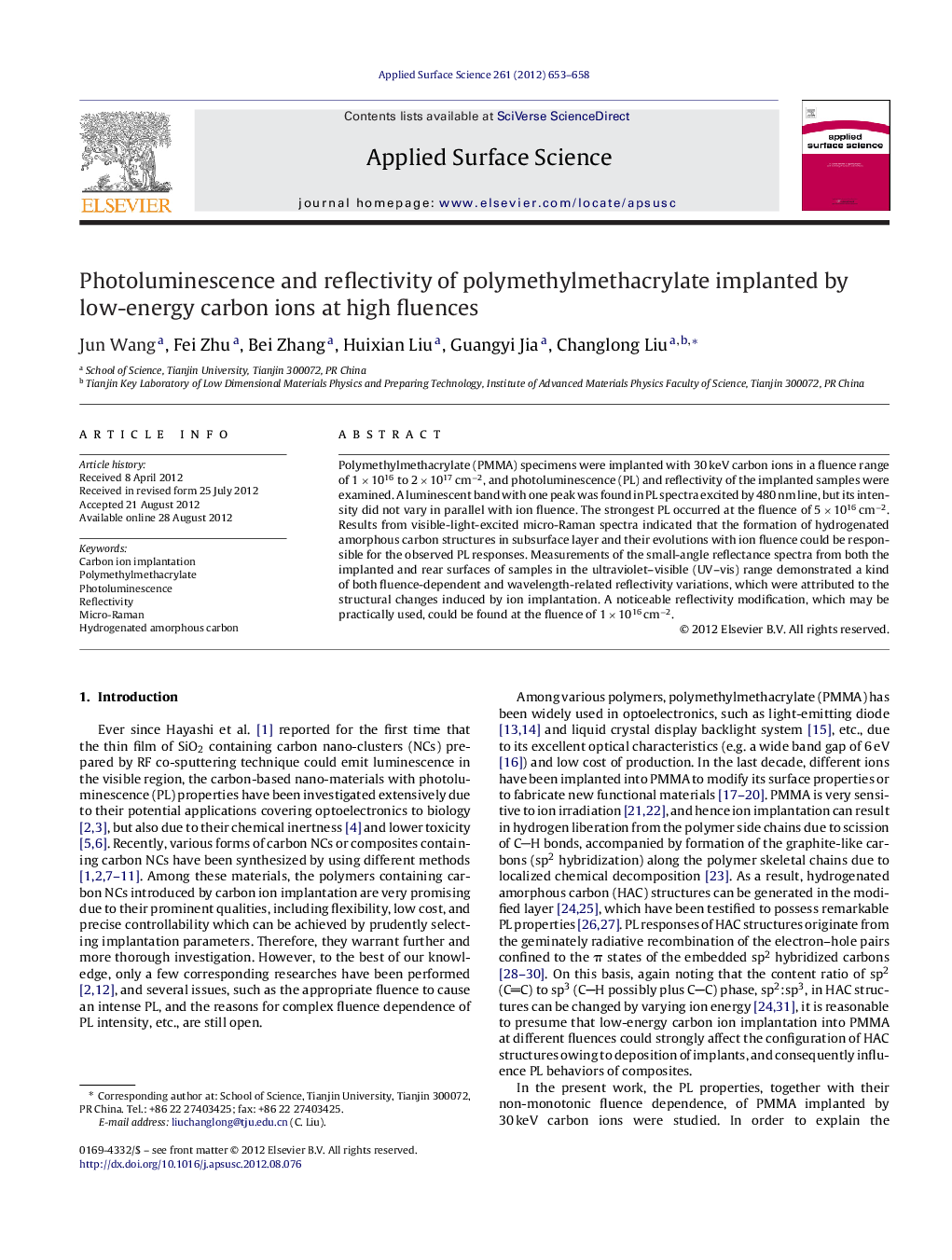| Article ID | Journal | Published Year | Pages | File Type |
|---|---|---|---|---|
| 5364596 | Applied Surface Science | 2012 | 6 Pages |
Polymethylmethacrylate (PMMA) specimens were implanted with 30Â keV carbon ions in a fluence range of 1Â ÃÂ 1016 to 2Â ÃÂ 1017Â cmâ2, and photoluminescence (PL) and reflectivity of the implanted samples were examined. A luminescent band with one peak was found in PL spectra excited by 480Â nm line, but its intensity did not vary in parallel with ion fluence. The strongest PL occurred at the fluence of 5Â ÃÂ 1016Â cmâ2. Results from visible-light-excited micro-Raman spectra indicated that the formation of hydrogenated amorphous carbon structures in subsurface layer and their evolutions with ion fluence could be responsible for the observed PL responses. Measurements of the small-angle reflectance spectra from both the implanted and rear surfaces of samples in the ultraviolet-visible (UV-vis) range demonstrated a kind of both fluence-dependent and wavelength-related reflectivity variations, which were attributed to the structural changes induced by ion implantation. A noticeable reflectivity modification, which may be practically used, could be found at the fluence of 1Â ÃÂ 1016Â cmâ2.
⺠Photoluminescence was studied in carbon implanted polymethylmethacrylate (PMMA). ⺠A significant photoluminescence enhancement occurred at ion fluence of 5 Ã 1016 cmâ2. ⺠Photoluminescence and Raman responses revealed carbon nanoclustered structures. ⺠Reflectivity of carbon implanted PMMA depended on both ion fluence and wavelength. ⺠A noticeable reflectivity modification appeared at ion fluence of 1 Ã 1016 cmâ2.
